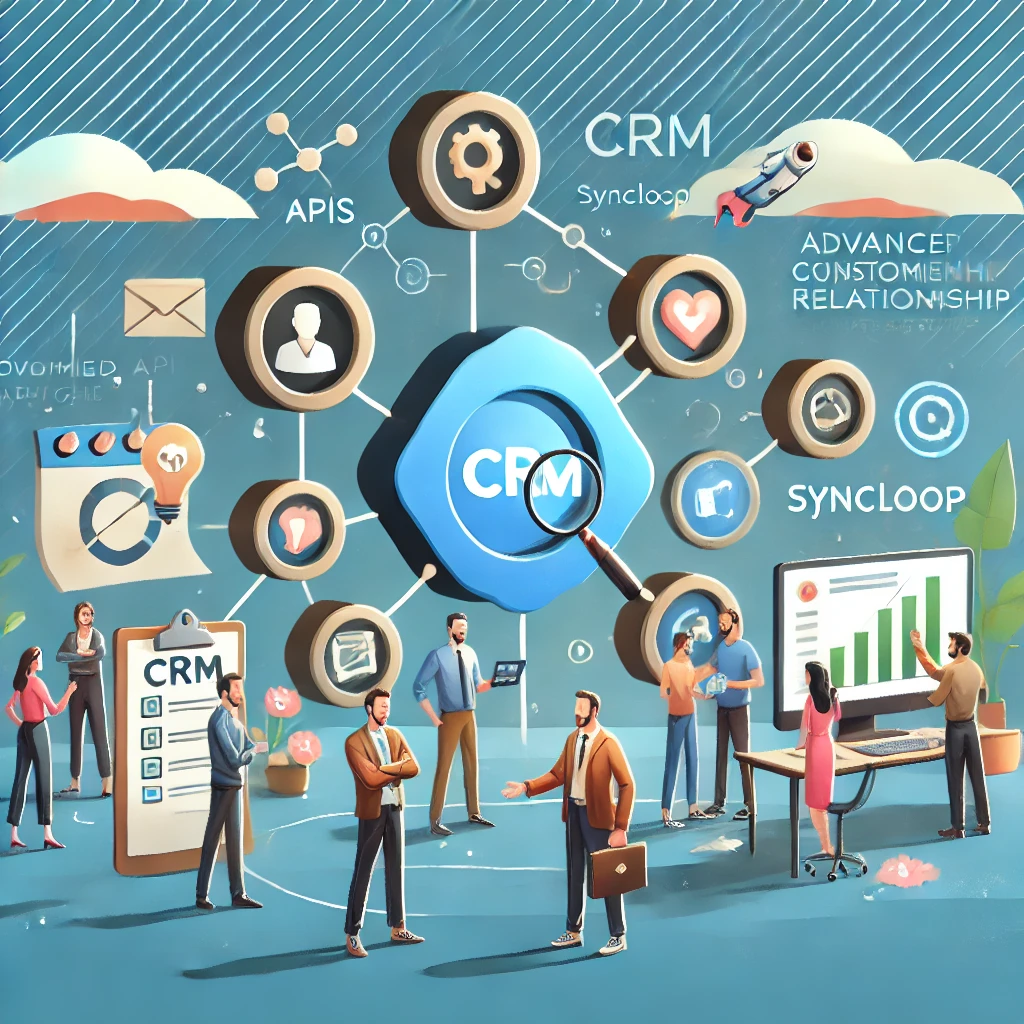Building APIs for Advanced Customer Relationship Management Tools with Syncloop

Syncloop simplifies the development of APIs for CRM tools by offering features like workflow automation, real-time data synchronization, and enhanced security. This blog explores how to build robust APIs for CRM systems using Syncloop and highlights best practices to ensure scalability and efficiency.
The Role of APIs in Advanced CRM Tools
APIs enable CRM tools to:
- Integrate with Third-Party Systems: Connect seamlessly with marketing platforms, email tools, and customer service software.
- Automate Workflows: Streamline repetitive tasks like lead assignment and customer follow-ups.
- Provide Real-Time Data: Sync customer data across platforms for instant updates.
- Enhance Analytics: Aggregate data from various sources for actionable insights.
- Improve Customer Engagement: Enable personalized interactions based on real-time customer data.
Challenges in Developing CRM APIs
- Data Synchronization Ensuring real-time updates across integrated systems and devices.
- Scalability Supporting growing datasets and user bases without performance degradation.
- Security and Compliance Protecting sensitive customer data and meeting regulatory standards like GDPR.
- Workflow Complexity Automating multi-step processes involving multiple systems and stakeholders.
- Integration Flexibility Supporting diverse platforms and communication protocols.
How Syncloop Simplifies CRM API Development
Syncloop provides tools and features to address these challenges effectively:
- Workflow Automation Automate processes like lead tracking, sales pipeline management, and customer segmentation.
- Real-Time Data Sync Ensure instant updates across integrated platforms for accurate and consistent data.
- Role-Based Access Control (RBAC) Secure sensitive data with fine-grained access controls and user permissions.
- Integration Support Connect with popular CRM platforms and third-party tools via standardized APIs.
- Scalability Tools Handle high-concurrency scenarios with dynamic resource allocation.
- Monitoring and Analytics Track API performance and customer engagement metrics in real time.
Steps to Build CRM APIs with Syncloop
Step 1: Define API Endpoints
Identify and design endpoints for core CRM functionalities, such as:
- /customer/create: Create new customer records.
- /lead/update: Update lead status in the sales pipeline.
- /analytics/insights: Fetch aggregated customer interaction data.
- /integration/sync: Sync data with third-party tools like email marketing platforms.
Step 2: Automate CRM Workflows
Use Syncloop’s workflow automation tools to:
- Automate lead scoring and assignment based on predefined criteria.
- Trigger follow-up reminders for sales representatives.
- Sync customer data changes across platforms automatically.
Step 3: Implement Real-Time Data Synchronization
Enhance data accuracy by:
- Using Syncloop’s real-time monitoring to track updates and changes.
- Implementing two-way synchronization for CRM tools and integrated systems.
- Configuring alerts for failed data syncs to ensure data consistency.
Step 4: Secure API Interactions
Leverage Syncloop’s security features to:
- Encrypt sensitive data during transmission and storage.
- Authenticate API requests using OAuth or token-based mechanisms.
- Enforce RBAC to control access to customer data and workflows.
Step 5: Monitor and Optimize
Use Syncloop’s monitoring tools to:
- Track API performance metrics such as latency and error rates.
- Identify bottlenecks in workflows and resolve them proactively.
- Use analytics to refine API workflows and improve customer engagement.
Best Practices for CRM API Development
- Design for Scalability Build APIs that can handle growing datasets and user bases without performance issues.
- Ensure Data Consistency Use real-time synchronization and conflict resolution mechanisms to maintain data accuracy.
- Prioritize Security Protect sensitive customer data with robust encryption, authentication, and compliance measures.
- Leverage AI and Analytics Integrate AI-driven tools for predictive analytics and customer segmentation.
- Document APIs Clearly Provide comprehensive documentation to ensure seamless integration and use by developers.
Example Use Case: Enterprise CRM System
An enterprise CRM system uses Syncloop to streamline operations:
- Real-Time Data Sync: Synchronizes customer data across marketing, sales, and customer support teams.
- Automated Workflows: Assigns leads to sales representatives based on geographic regions.
- Enhanced Security: Encrypts customer data and enforces RBAC to restrict access.
- Integration Support: Connects seamlessly with email marketing and customer service platforms.
- Monitoring and Analytics: Tracks sales pipeline metrics and customer engagement data for insights.
Benefits of Using Syncloop for CRM APIs
- Improved Efficiency: Automate repetitive tasks and streamline workflows.
- Enhanced Customer Insights: Use real-time data and analytics to make informed decisions.
- Better Security: Protect sensitive customer data with advanced security measures.
- Scalable Solutions: Handle increasing data volumes and user demands seamlessly.
- Proactive Management: Monitor API performance and address issues proactively.
The Future of CRM API Development
As CRM tools become more integrated and data-driven, APIs will play an increasingly vital role in enabling seamless workflows and real-time insights. Syncloop empowers developers to build advanced, secure, and scalable APIs for CRM systems, driving better customer engagement and business outcomes.
Image Description
A conceptual illustration showcasing Syncloop’s tools for building APIs for advanced CRM tools, featuring workflow automation, real-time data synchronization, and enhanced security. The image highlights seamless integration and scalable solutions for CRM systems.
Back to Blogs